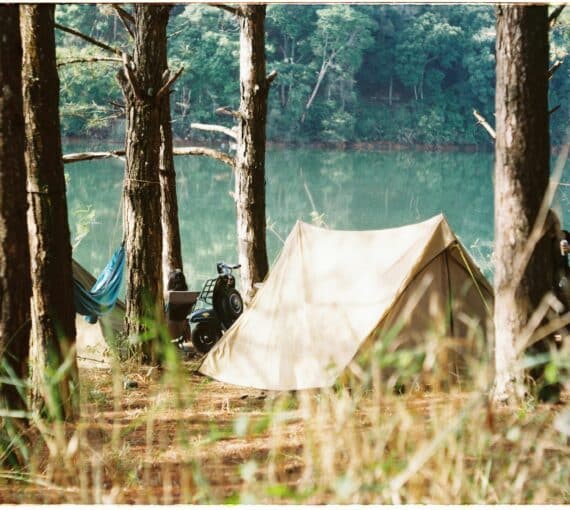
Thoughtful packing is a simple yet effective way to reduce your environmental footprint while travelling.
Travel can inspire, connect and broaden your perspective. It also takes a toll on the planet. With planning and mindful choices, you can reduce your environmental footprint while you explore the world.
Travel lighter on Earth. Plan responsibly. Pack wisely. Make conscious decisions on the road.
Travel privilege
Not everyone can explore new places or experience different cultures and diverse environments.
Economic disparities, time limitations, health issues, political restrictions and environmental factors prevent many people from travelling. Others travel frequently, often without consideration for their journeys’ impacts. Travel privilege comes with responsibility. Respect the planet and the communities you visit.
The impact of tourism on the environment
Tourism is beneficial for economies and cultural exchange. But it has significant environmental and social consequences. Mass tourism often prioritizes convenience and consumption over care and sustainability.
Natural resource depletion
Tourism puts significant pressure on water, land, energy and food. High tourist demands increase consumption, especially in peak seasons. This often leads to shortages and environmental degradation that local communities must address.
Pollution
Tourism contributes to many types of pollution. This often exceeds what local systems and infrastructure can manage. Air pollution from transportation contributes to carbon emissions and climate change. Noise pollution from transportation, recreational activities and development can disturb wildlife and communities. Waste and sewage are major challenges in destinations with limited infrastructure. Litter, marine dumping and sewage runoff can harm wildlife, aquatic ecosystems and water quality. Poorly designed resorts, hotels and developments clash with local architecture and landscapes, creating visual pollution.
Degradation
Tourism can alter ecosystems through construction, overuse and ongoing recreational activities. Tourist infrastructure can damage beaches, wetlands, forests and aquatic ecosystems — disrupting species and natural cycles. Overuse of trails and natural areas can trample vegetation, speed up erosion and reduce biodiversity.
Ecotourism versus sustainable tourism
“Ecotourism” and “sustainable tourism” are often used interchangeably. Each term has distinct meanings and implications.
Ecotourism is sustainable and nature-based. It prioritizes conservation, education and local engagement while minimizing environmental impact. At its best, it can help protect ecosystems and fund conservation efforts. It’s often criticized for greenwashing, reinforcing colonial power dynamics and pushing Indigenous people out of ancestral territories under the guise of conservation — creating conservation refugees.
Sustainable tourism is a broader approach that applies to all types of travel. It considers tourism’s full impact — environmental, cultural and economic. It seeks to reduce harm while maximizing benefits for communities and ecosystems.
Ecotourism and sustainable tourism emphasize environmental stewardship. Ecotourism is more focused on nature-based experiences and conservation. Sustainable tourism applies to the entire travel industry.
Tip! When considering travel experiences and destinations centred around ecotourism, always do your research. Research the tour operator. Ask how local people and environments are involved and affected. Choose experiences that put sustainability over spectacle.
HOW TOURIST DESTINATIONS HAVE ADAPTED
Slovenia
Cars are banned in the capital Ljubjana’s centre. The city boosts cycling, public transit and walkable spaces. The country’s “Green Scheme” certifies sustainable tourism businesses and regions. This makes it easier for travellers to make responsible choices.
Palau
Visitors to this Pacific island nation must sign the “Palau Pledge.” This is a promise stamped into their passport to act responsibly and protect the island’s natural and cultural heritage. The country was the first to ban sunscreen harmful to coral reefs.
Bhutan
Bhutan limits tourism through a “high value, low volume” approach. It requires visitors to pay a daily “Sustainable Development Fee.” This helps preserve the country’s cultural heritage and pristine landscapes. It also ensures tourism supports social programs and sustainability projects.
Sources:
1. Slovenia Tourism, Green Scheme of Slovenian tourism
2. Palau Pledge
3. Visit Bhutan, Sustainable Development Fee
Before your trip: Sustainable travel planning
Sustainable travel isn’t about giving up adventure. It’s about being more intentional with your choices. Thoughtful preparation is key to being a sustainable, low-impact traveller.
Choose your destination with care
- Avoid popular tourist destinations. Overtourism leaves many travel hots spots struggling with increasing environmental pressure or local displacement. If you plan a trip to a popular destination, avoid travelling during peak season.
- Travel closer to home. Discover beauty and culture nearby (like camping). Destinations reachable by bus or train lower your impact by forgoing air travel.
- Choose destinations that promote sustainable tourism practices. Research. Seek destinations, tour operators and travel agents with strong sustainability policies. Destinations throughout the world are known for their commitment to sustainable tourism. Look for cities leading green urban tourism efforts.

Sustainable tourism checklist
When booking a tour, activity or accommodation, watch for greenwashing or virtue signaling.
Look for indicators of environmental responsibility:
- Are efforts to reduce environmental impact (e.g., low-waste practices, clean energy, local sourcing) clearly stated?
- Is the group size allowance limited to cut ecological footprint?
- How do they interact with natural habitats?
- Do they have a sustainability or ethical tourism policy online?
- Are reviews and testimonials consistent with what’s advertised — especially from local voices?
Look for indicators of ethical, respectful community engagement:
- Is the business locally owned and operated?
- Are local people involved in the experience — not just observed?
- Are cultural traditions treated with respect and not performed solely for tourists or commodified?
- Are local guides compensated fairly, treated ethically and provided safe working conditions?
If you can’t find answers, ask the supplier.

Air travel and climate change
Air travel makes up 70 per cent of your trip’s emissions. If flying is unavoidable, make informed decisions. Understand air travel’s impact on climate change — and what you can do about it.
Plan an itinerary that minimizes impact
- Stay longer in fewer places. Slow travel cuts emissions and creates more meaningful experiences with more opportunities to take part in cultural exchange.
- Choose locally owned accommodation and tour operators. If possible, find hotels, hostels or homestays with sustainability initiatives (e.g., renewable energy power, water conservation measures, waste reduction policies).
- Book activities that respect wildlife and ecosystems. Avoid operations and activities that exploit animals or fragile environments.
Pack for a greener trip
Thoughtful packing is a simple yet effective way to reduce your environmental footprint while travelling.
- Pack lightly. The heavier your luggage, the more fuel is needed to transport it — especially by air. Stick to versatile, durable pieces you can mix, match and layer.
- Bring reusable essentials. Avoid single-use plastics by packing items you can use again and again (e.g., travel cutlery, water bottle, cloth napkin, reusable food container or snack pouch, reusable shopping bag, etc.).
- Choose low-waste toiletries. Refillable containers, solid shampoo, conditioner and soap bars, biodegradable products, toothpaste tablets, reusable cotton swabs and menstrual cups are examples of toiletries that minimize waste and reduce plastic pollution.
Tip! Need new travel gear, accessories and garments? Look for pre-loved options at local thrift or consignment stores or borrow from your community.
During your trip: How to reduce your impact while travelling
When you’re at your travel destination, there are many ways to lower your impact.
- Respect local cultures and customs. Be conscious of cultural norms, learn basic local phrases and engage with the community in a meaningful way (e.g., hiring a local guide, joining a community-led tour, staying in a family-run guesthouse, etc.).
- Shop sensibly and support local communities. Instead of buying mass-produced souvenirs, seek out handmade goods from local artisans. Choose practical items you’ll use.
- Use public transportation. When possible, avoid renting a car or taking a taxi. Using public transportation reduces your carbon footprint. You’ll also get to experience your travel destination from a local perspective. Research options when you’re planning.
- Eat mindfully. Dine at family-run establishments. Buy local, seasonal food when possible. Make your own snack to-go packs to avoid excess packaging waste. Bring a reusable container to meals for leftovers to curb food waste.
- Respect local wildlife. Avoid excursions and activities that exploit animals (e.g., animal rides, non-ethical zoos). Support ethical wildlife tours and sanctuaries that focus on animal welfare and rehabilitation.
After your trip: Keep the momentum going
Sustainable travel is a journey. Each trip is an opportunity to do better. Reflect on your trip. Think about what worked well and where you could improve.
Talk about your experiences as a low-impact traveller with friends and family. Share tips and recommendations. Encourage others to make sustainable travel choices.
Support the places you’ve visited. Consider donating to local conservation efforts or community initiatives.



